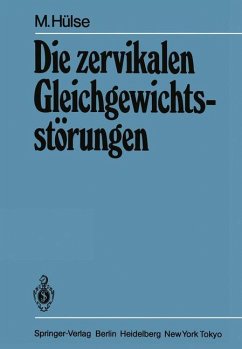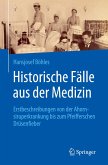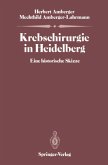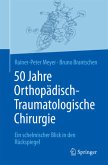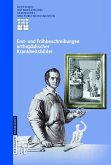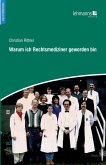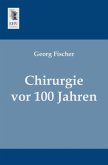Anaesthesia
Essays on Its History
Ed. by Rupreht, Joseph; Lieburg, Marius J. van; Lee, John A. u. a.
Anaesthesia
Essays on Its History
Ed. by Rupreht, Joseph; Lieburg, Marius J. van; Lee, John A. u. a.
- Broschiertes Buch
- Merkliste
- Auf die Merkliste
- Bewerten Bewerten
- Teilen
- Produkt teilen
- Produkterinnerung
- Produkterinnerung
thesiologist, were not included. Perhaps the next symposium will have a paper on his many contributions. Even though his dates are not quite modem (1813-1858), his accomplishments were, especially his book On Chloroform and Other Anaesthetics (1858), the first comprehensive textbook on anaesthesia [2]. There has been a real renaissance of interest in the history of anaesthesia. Among those responsible for this rebirth, besides Dr. Rupreht and Dr. Erdmann, are Dr. Selma Calmes and Dr. Rod Calverley, now on the Board of the new American society, the Anesthesia History Association. It held its…mehr
Andere Kunden interessierten sich auch für
![Historische Fälle aus der Medizin Historische Fälle aus der Medizin]() Hansjosef BöhlesHistorische Fälle aus der Medizin49,99 €
Hansjosef BöhlesHistorische Fälle aus der Medizin49,99 €![Jahre der Entwicklung der Neurochirurgie in Deutschland Jahre der Entwicklung der Neurochirurgie in Deutschland]() K.-J. ZülchJahre der Entwicklung der Neurochirurgie in Deutschland84,99 €
K.-J. ZülchJahre der Entwicklung der Neurochirurgie in Deutschland84,99 €![Krebschirurgie in Heidelberg Krebschirurgie in Heidelberg]() Herbert AmbergerKrebschirurgie in Heidelberg54,99 €
Herbert AmbergerKrebschirurgie in Heidelberg54,99 €![50 Jahre Orthopädisch-Traumatologische Chirurgie 50 Jahre Orthopädisch-Traumatologische Chirurgie]() Rainer-Peter Meyer50 Jahre Orthopädisch-Traumatologische Chirurgie37,99 €
Rainer-Peter Meyer50 Jahre Orthopädisch-Traumatologische Chirurgie37,99 €![Erst- und Frühbeschreibungen orthopädischer Krankheitsbilder Erst- und Frühbeschreibungen orthopädischer Krankheitsbilder]() Ludwig Zichner / Michael A. Rauschmann / Klaus-Dieter Thomann (Hgg.)Erst- und Frühbeschreibungen orthopädischer Krankheitsbilder37,99 €
Ludwig Zichner / Michael A. Rauschmann / Klaus-Dieter Thomann (Hgg.)Erst- und Frühbeschreibungen orthopädischer Krankheitsbilder37,99 €![Warum ich Rechtsmediziner geworden bin Warum ich Rechtsmediziner geworden bin]() Christian RittnerWarum ich Rechtsmediziner geworden bin17,95 €
Christian RittnerWarum ich Rechtsmediziner geworden bin17,95 €![Chirurgie vor 100 Jahren Chirurgie vor 100 Jahren]() Georg FischerChirurgie vor 100 Jahren59,90 €
Georg FischerChirurgie vor 100 Jahren59,90 €-
-
-
thesiologist, were not included. Perhaps the next symposium will have a paper on his many contributions. Even though his dates are not quite modem (1813-1858), his accomplishments were, especially his book On Chloroform and Other Anaesthetics (1858), the first comprehensive textbook on anaesthesia [2]. There has been a real renaissance of interest in the history of anaesthesia. Among those responsible for this rebirth, besides Dr. Rupreht and Dr. Erdmann, are Dr. Selma Calmes and Dr. Rod Calverley, now on the Board of the new American society, the Anesthesia History Association. It held its inaugural meeting in Atlanta, Georgia, during the annual meeting of the American Society of Anesthesiologists, on 9 October 1983. The meeting was well attended, and the evening was profitable and delightful. Mention should also be made of the accomplishments of the nurse anaesthetists [3]. They are many in number, and generally they work under the direction of a physician anaesthesiologist. Although modem anaesthesia was Ameriea's first great medieal diseovery, it soon traversed the globe and found worldwide acceptance. The British, for example, have made many coeval and historie contributions. Besides Dr. Duncum one thinks of Prof. T. Cecil Gray, who pioneered the British use ofeurare [4], andDr. J. Alfred Lee, whowas a pioneerin the use ofspin~l anaesthesia and is currently working on the fifth edition of a textbook on spinal analgesia [7]. Dr.
Hinweis: Dieser Artikel kann nur an eine deutsche Lieferadresse ausgeliefert werden.
Hinweis: Dieser Artikel kann nur an eine deutsche Lieferadresse ausgeliefert werden.
Produktdetails
- Produktdetails
- Verlag: Springer / Springer Berlin Heidelberg / Springer, Berlin
- Artikelnr. des Verlages: 978-3-540-13255-4
- 1985.
- Seitenzahl: 432
- Erscheinungstermin: 1. Juli 1985
- Englisch
- Abmessung: 242mm x 170mm x 24mm
- Gewicht: 712g
- ISBN-13: 9783540132554
- ISBN-10: 3540132554
- Artikelnr.: 36110794
- Herstellerkennzeichnung Die Herstellerinformationen sind derzeit nicht verfügbar.
- Verlag: Springer / Springer Berlin Heidelberg / Springer, Berlin
- Artikelnr. des Verlages: 978-3-540-13255-4
- 1985.
- Seitenzahl: 432
- Erscheinungstermin: 1. Juli 1985
- Englisch
- Abmessung: 242mm x 170mm x 24mm
- Gewicht: 712g
- ISBN-13: 9783540132554
- ISBN-10: 3540132554
- Artikelnr.: 36110794
- Herstellerkennzeichnung Die Herstellerinformationen sind derzeit nicht verfügbar.
1 Introductory Essay.- 1.1 Anaesthesiology: Its Origins and Its Mission.- 2 Pioneers in Anaesthesia.- 2.1 Foreword.- 2.2 Sir Ivan Magill's Contribution to Anaesthesia.- 2.3 J. T. Clover: A Giant of Victorian Anaesthesia.- 2.4 Charles Waterton (1782-1865): Curare and a Canadian National Park.- 2.5 Francis Sibson (1814-1876): Pioneer and Prophet in Anaesthesia.- 2.6 The Continuing Influence of Ralph M. Waters on Education in Anesthesiology.- 2.7 The Influence of Ralph M. Waters on the Development of Anaesthesiology in Sweden.- 2.8 John S. Lundy: Father of Intravenous Anesthesia.- 2.9 Development of the Apgar Score.- 2.10 Arthur E. Guedel (1883-1956).- 2.11 Dr. Cornelis R. Ritsema van Eck: A Many-Sided Pioneer.- 2.12 The Pioneer Anaesthetists of Australia.- 2.13 Anesthesia and Resuscitation Equipment I Happened to be Involved With.- 3 Development of Techniques.- 3.1 Foreword.- 3.2 The Forgotten Foundations of Modern Closed-Circuit Anesthetic Technique.- 3.3 The Use of Alcohol for Anesthesia by Miguel García-Marín.- 3.4 Early Problems in Establishing Intravenous Anaesthesia.- 3.5 Dissociative Anesthesia.- 3.6 Open Drop Ether Versus Relaxant Techniques in Obstetrics.- 3.7 Massive Blood Transfusions - Warming of Bank Blood.- 3.8 History of Fluid Administration During Anesthesia and Operation.- 3.9 Birth of Neuroplegia and Artificial Hibernation in France.- 3.10 The Treatment of Shock with Vasodilating Agents.- 3.11 The Lytic Cocktail, 20 Years On.- 3.12 The Use of the Cuirass Ventilator, Belt Type.- 3.13 A Mechanical Heart-Lung Machine for Use in Man.- 3.14 The Development of Cardiothoracic Anaesthesia - The International and Local Experience.- 3.15 Regional Block: Its History in the United States Since World War II.- 3.16 The History and Development ofObstetric Anesthesia.- 3.17 History of Resuscitation of Newborn Infants.- 3.18 History and Development of Pediatric Anesthesia in Japan.- 3.19 History of Neurosurgical Anaesthesia.- 3.20 The Origins of Three Important Changes in Anaesthetic Practice.- 3.21 History of Development of Standards for Anesthesia Equipment.- 3.22 Possible Hazards of Technical Progress in Anaesthetic Practice.- 3.23 Theodore Schwann and the Invention of Closed-Circuit Breathing.- 3.24 The Early Development of Blood Gas and Blood Acid-Base Measurements.- 3.25 History of Hypothermic Anesthesia by Surface Cooling in Japan.- 4 Regional Developments in Anaesthesia.- 4.1 Foreword.- 4.2 Anesthesia Research Interests in the United States, 1940-1980.- 4.3 Anesthesiology and Pharmacology at Wisconsin in the 1930s.- 4.4 The Edinburgh Contribution.- 4.5 The Yorkshire Society of Anaesthetists, Its Postwar Birth and Development.- 4.6 Review of Modern Anaesthesia in South Africa.- 4.7 The Impact of the Introduction of Curare in Australia.- 4.8 History of Modern Anesthesia in Japan.- 4.9 The Influence of Modern Anaesthesia of Other Countries on the Growth of Anaesthesia in Japan.- 4.10 History of Modern Anesthesia in China.- 4.11 Reminiscences of Anaesthesia During the Blitz and 10 Happy Years in India.- 4.12 History of Modern Anesthesia in Lebanon.- 4.13 Recent History of Resuscitation in Norway.- 4.14 The Development of Modern Anaesthesia in Italy.- 4.15 On the Development of Modern Anesthesia in Yugoslavia.- 4.16 The Development of Anesthesiology in Czechoslovakia.- 4.17 The First Interdisciplinary Centre for Intensive Care Therapy in Prague.- 4.18 From Open Ether to Open Hearts.- 4.19 Cyclopropane Anesthesia: Its Introduction at Wisconsin.- 4.20 The Introduction of Neuromuscular Blocking Drugs intoAnaesthetic Practice in a Large "Poor-Law" Hospital.- 4.21 Reminiscences of the First German Anesthesia Congress in Hamburg (1927) and Rolf Frey's Departure to Mainz.- 4.22 A Tale of Two Cities.- 4.23 Reminiscences of the Development of Modern Anaesthesia in Norway.- 4.24 Combat Casualty Anesthesia in Viet Nam.- 4.25 Early History of the British Journal of Anaesthesia.- 4.26 The British Journal of Anaesthesia. Its Evolution to the Present Position.- 4.27 The Acta Anaesthesiologica Belgica.- 5 The World Organization.- 5.1 Foreword.- 5.2 An Account of the Development of the World Federation of Societies of Anaesthesiologists.- 5.3 The World Federation of Societies of Anaesthesiologists, 1968-1984.- 5.4 Anaesthesiology Centre Copenhagen.- 5.5 The Section of Anaesthesia and Intensive Care of the European Union of Medical Specialists and Its Contribution to the Professional Status of Anaesthesiology in the European Economic Community.- 6 Humanism in Anaesthesia.- 6.1 Foreword.- 6.2 Reflections After a 40 year Interest in the History of Modern Anaesthesia.- 6.3 Modern Anaesthesia, with Special Reference to the Chair of Anaesthetics in Oxford.- 6.4 A Worm's Eye View of the Anaesthetic Department.- 6.5 The Value of the History of Anaesthesia for Anaesthetists and Anaesthetists in Training.- 6.6 The Nurse-Anaesthetist in Norway.- 6.7 The Whys and Wherefores of Collecting.- 6.8 Historical Aspects of the Problem of Surgical Awareness.- 6.9 Clinician Versus Researcher in Anaesthesia.- 6.10 Charles T. Jackson's Claim to the Discovery of Etherization.- 6.11 Professor William W. Mushin About Anaesthesiology. An Interview.- 6.12 The National Catalogue of Anaesthetic Books, Documents and Equipment.
1 Introductory Essay.- 1.1 Anaesthesiology: Its Origins and Its Mission.- 2 Pioneers in Anaesthesia.- 2.1 Foreword.- 2.2 Sir Ivan Magill's Contribution to Anaesthesia.- 2.3 J. T. Clover: A Giant of Victorian Anaesthesia.- 2.4 Charles Waterton (1782-1865): Curare and a Canadian National Park.- 2.5 Francis Sibson (1814-1876): Pioneer and Prophet in Anaesthesia.- 2.6 The Continuing Influence of Ralph M. Waters on Education in Anesthesiology.- 2.7 The Influence of Ralph M. Waters on the Development of Anaesthesiology in Sweden.- 2.8 John S. Lundy: Father of Intravenous Anesthesia.- 2.9 Development of the Apgar Score.- 2.10 Arthur E. Guedel (1883-1956).- 2.11 Dr. Cornelis R. Ritsema van Eck: A Many-Sided Pioneer.- 2.12 The Pioneer Anaesthetists of Australia.- 2.13 Anesthesia and Resuscitation Equipment I Happened to be Involved With.- 3 Development of Techniques.- 3.1 Foreword.- 3.2 The Forgotten Foundations of Modern Closed-Circuit Anesthetic Technique.- 3.3 The Use of Alcohol for Anesthesia by Miguel García-Marín.- 3.4 Early Problems in Establishing Intravenous Anaesthesia.- 3.5 Dissociative Anesthesia.- 3.6 Open Drop Ether Versus Relaxant Techniques in Obstetrics.- 3.7 Massive Blood Transfusions - Warming of Bank Blood.- 3.8 History of Fluid Administration During Anesthesia and Operation.- 3.9 Birth of Neuroplegia and Artificial Hibernation in France.- 3.10 The Treatment of Shock with Vasodilating Agents.- 3.11 The Lytic Cocktail, 20 Years On.- 3.12 The Use of the Cuirass Ventilator, Belt Type.- 3.13 A Mechanical Heart-Lung Machine for Use in Man.- 3.14 The Development of Cardiothoracic Anaesthesia - The International and Local Experience.- 3.15 Regional Block: Its History in the United States Since World War II.- 3.16 The History and Development ofObstetric Anesthesia.- 3.17 History of Resuscitation of Newborn Infants.- 3.18 History and Development of Pediatric Anesthesia in Japan.- 3.19 History of Neurosurgical Anaesthesia.- 3.20 The Origins of Three Important Changes in Anaesthetic Practice.- 3.21 History of Development of Standards for Anesthesia Equipment.- 3.22 Possible Hazards of Technical Progress in Anaesthetic Practice.- 3.23 Theodore Schwann and the Invention of Closed-Circuit Breathing.- 3.24 The Early Development of Blood Gas and Blood Acid-Base Measurements.- 3.25 History of Hypothermic Anesthesia by Surface Cooling in Japan.- 4 Regional Developments in Anaesthesia.- 4.1 Foreword.- 4.2 Anesthesia Research Interests in the United States, 1940-1980.- 4.3 Anesthesiology and Pharmacology at Wisconsin in the 1930s.- 4.4 The Edinburgh Contribution.- 4.5 The Yorkshire Society of Anaesthetists, Its Postwar Birth and Development.- 4.6 Review of Modern Anaesthesia in South Africa.- 4.7 The Impact of the Introduction of Curare in Australia.- 4.8 History of Modern Anesthesia in Japan.- 4.9 The Influence of Modern Anaesthesia of Other Countries on the Growth of Anaesthesia in Japan.- 4.10 History of Modern Anesthesia in China.- 4.11 Reminiscences of Anaesthesia During the Blitz and 10 Happy Years in India.- 4.12 History of Modern Anesthesia in Lebanon.- 4.13 Recent History of Resuscitation in Norway.- 4.14 The Development of Modern Anaesthesia in Italy.- 4.15 On the Development of Modern Anesthesia in Yugoslavia.- 4.16 The Development of Anesthesiology in Czechoslovakia.- 4.17 The First Interdisciplinary Centre for Intensive Care Therapy in Prague.- 4.18 From Open Ether to Open Hearts.- 4.19 Cyclopropane Anesthesia: Its Introduction at Wisconsin.- 4.20 The Introduction of Neuromuscular Blocking Drugs intoAnaesthetic Practice in a Large "Poor-Law" Hospital.- 4.21 Reminiscences of the First German Anesthesia Congress in Hamburg (1927) and Rolf Frey's Departure to Mainz.- 4.22 A Tale of Two Cities.- 4.23 Reminiscences of the Development of Modern Anaesthesia in Norway.- 4.24 Combat Casualty Anesthesia in Viet Nam.- 4.25 Early History of the British Journal of Anaesthesia.- 4.26 The British Journal of Anaesthesia. Its Evolution to the Present Position.- 4.27 The Acta Anaesthesiologica Belgica.- 5 The World Organization.- 5.1 Foreword.- 5.2 An Account of the Development of the World Federation of Societies of Anaesthesiologists.- 5.3 The World Federation of Societies of Anaesthesiologists, 1968-1984.- 5.4 Anaesthesiology Centre Copenhagen.- 5.5 The Section of Anaesthesia and Intensive Care of the European Union of Medical Specialists and Its Contribution to the Professional Status of Anaesthesiology in the European Economic Community.- 6 Humanism in Anaesthesia.- 6.1 Foreword.- 6.2 Reflections After a 40 year Interest in the History of Modern Anaesthesia.- 6.3 Modern Anaesthesia, with Special Reference to the Chair of Anaesthetics in Oxford.- 6.4 A Worm's Eye View of the Anaesthetic Department.- 6.5 The Value of the History of Anaesthesia for Anaesthetists and Anaesthetists in Training.- 6.6 The Nurse-Anaesthetist in Norway.- 6.7 The Whys and Wherefores of Collecting.- 6.8 Historical Aspects of the Problem of Surgical Awareness.- 6.9 Clinician Versus Researcher in Anaesthesia.- 6.10 Charles T. Jackson's Claim to the Discovery of Etherization.- 6.11 Professor William W. Mushin About Anaesthesiology. An Interview.- 6.12 The National Catalogue of Anaesthetic Books, Documents and Equipment.

